Angelus Chronodato: a “cult” watch among vintage fans (Part 2/2)

Angelus Chronodato: a “cult” watch among vintage fans (Part 1/2)
17 December 2018
Restoration of a Breitling Sprint Ref 2016 composite case
14 January 2019“This is the second part of the interesting article by Miquel Cladera that we published a few days ago on our blog. Miquel thanks again for this marvel”
WRITTEN BY
MIQUEL ANGEL CLADERA
But let’s go back to our protagonist; We have already seen that it is clear that it was the first chrono with triple date with caliber manufacture in mass production and its release to the market, was a tremendous success in sales. Trying to classify the different Chronodato models that came out onto the market and their references is almost impossible since, although there is a lot of information about the watch on the network, it always comes from the same sources, that is, they all repeat themselves.
Unfortunately, at the close of the Maison, all the archives of the Maison were lost, as well as the great majority of furnitures and machinery; a real shame to try to develop a good research work. Fortunately, a few years ago I was able to find a catalog of 1945, which, however, is no longer available on the web, but I will make it available to anyone who wishes to ask for it. From here I extract this page with some of the models that went on the market, but I repeat, are not the last or the only ones. Angelus named it in its first year “Chronodato” although from 1943 it appeared in the quadrant as “Chronodato”
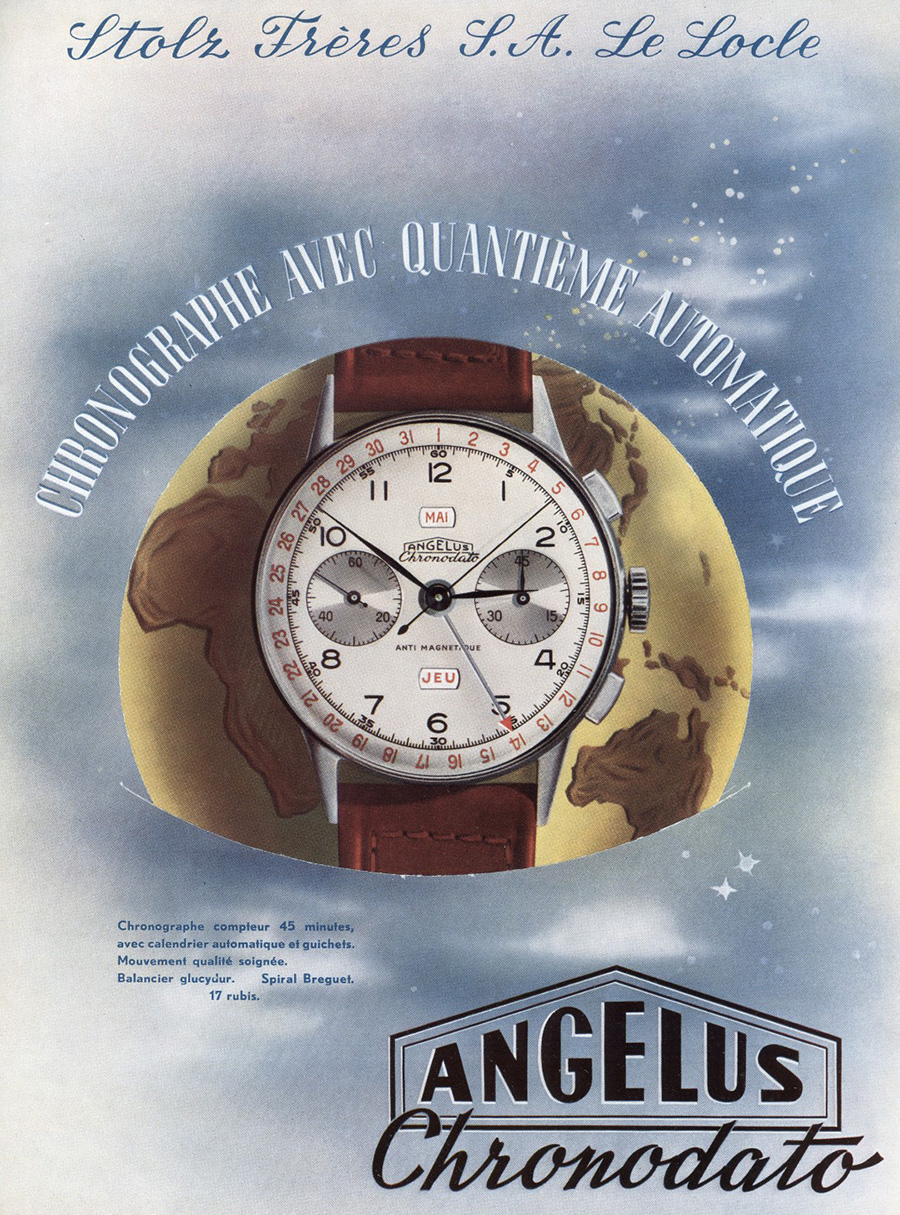
The first thing that draws attention is how harmonious the dial is even though it contains a lot of information. The bicompax chrono with a 45-minute counter, The characteristic perpendicular layout of the windows of the date discs, with the month at the top and the day of the week on the back and the days of the month circling the dial and marked by a hand in the shape of an arrowhead, make the whole truly legible. Under the window of the month, it carries its characteristic logo, framed with one or two lines (depending on the model) and the legend “Chronodato” in its base
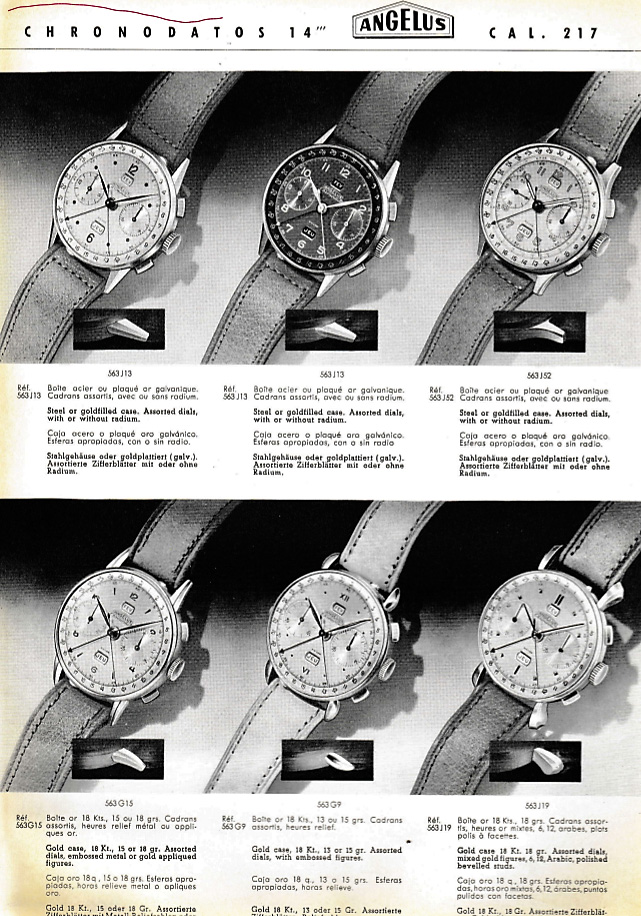
This is the only official reference of the known models of Chronodato as of 1945
Here is a piece of my private collection, 18K gold, which however does not correspond to any reference in this catalog
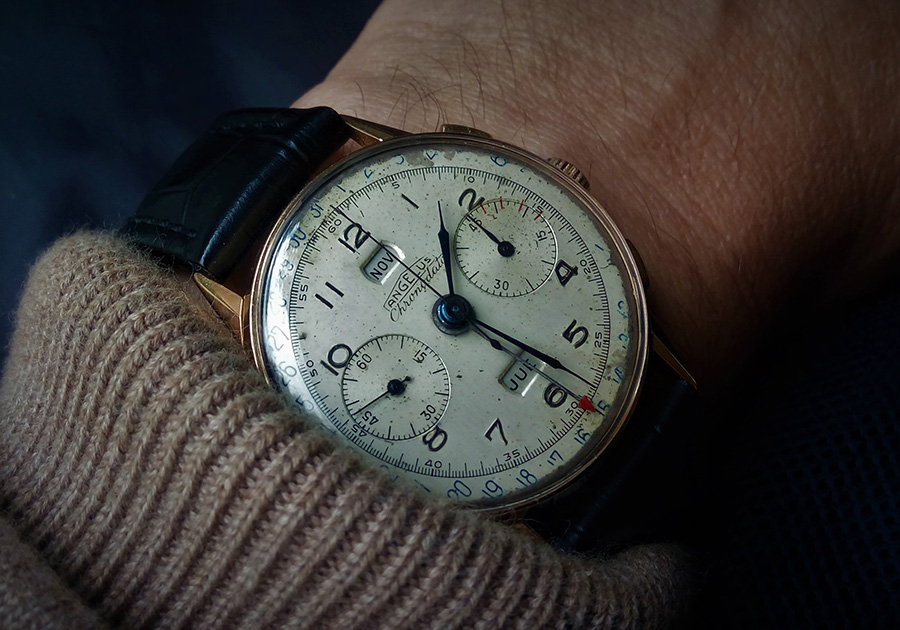
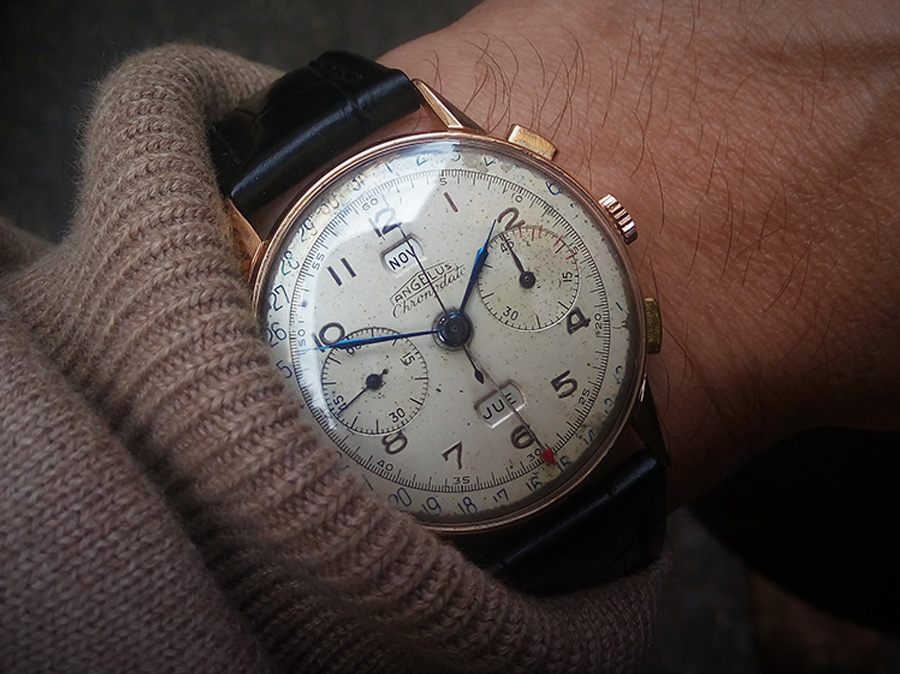
Your precious caliber
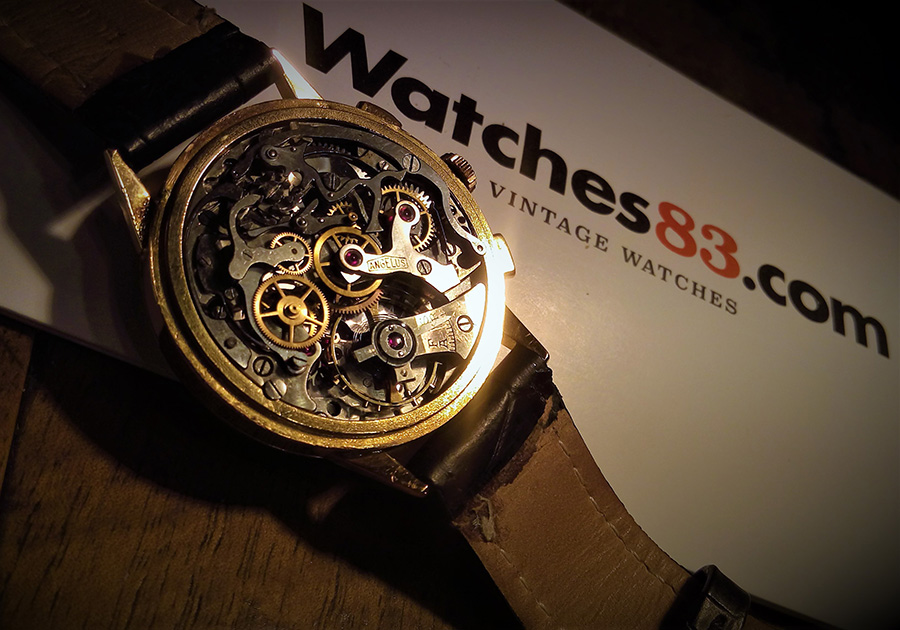
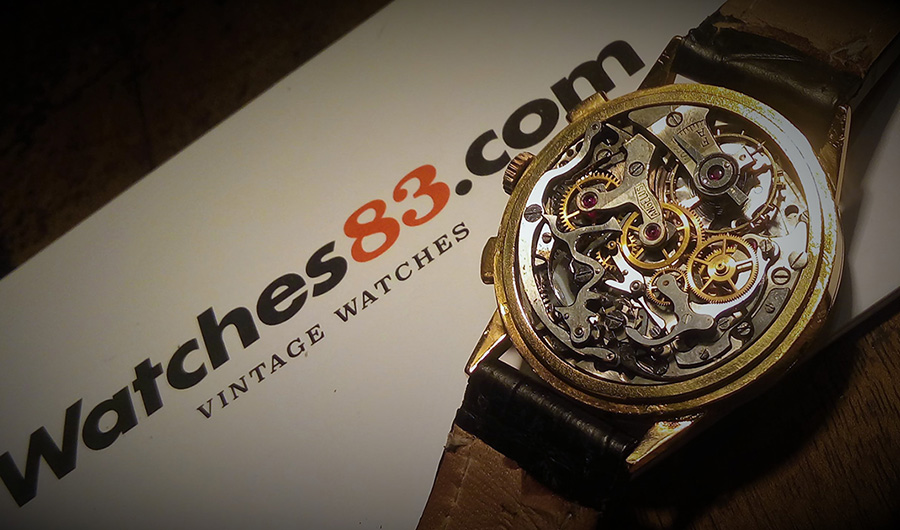
Your instruction manual

Where, curiously, a review of it is recommended every two years.
The Chronodato was produced for approximately a decade, being marketed in countries with emerging Spanish and Portuguese speaking economies, which did not suffer the ravages of war (it is curious that the only complete catalog known, be it from a Mexican representative) in the USA, and in its early appearance in France, Germany and of course Switzerland. A sampling of the calendar languages attests to this (17).
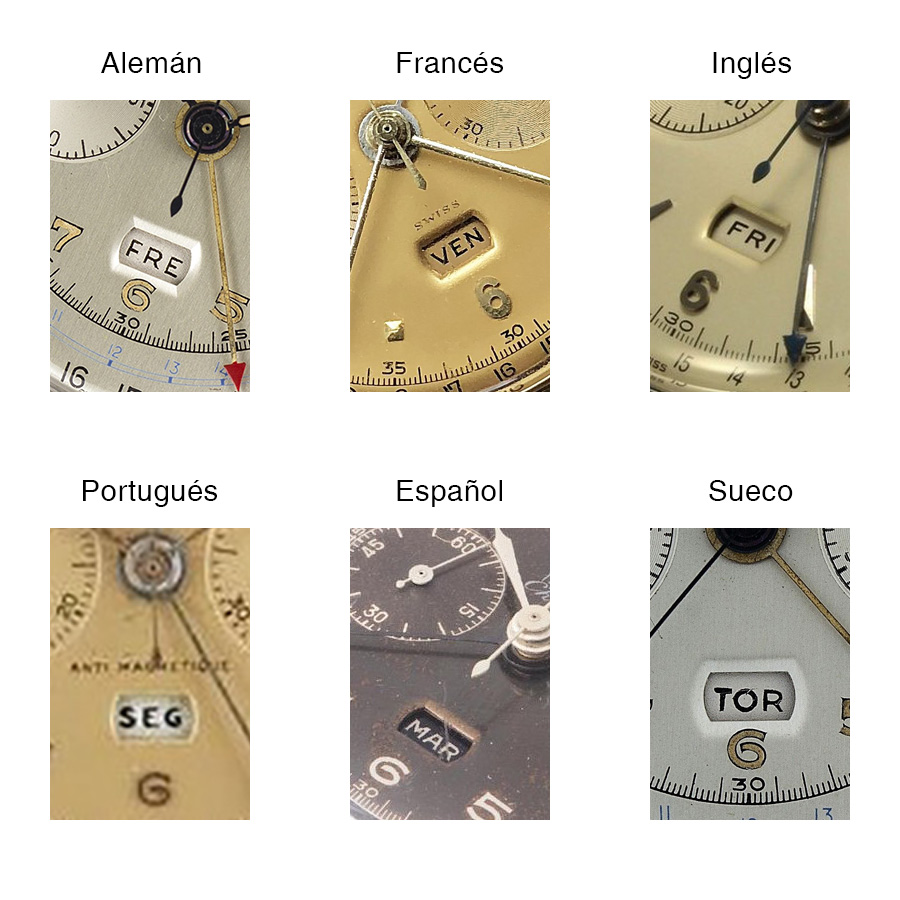
(17) Some time ago I saw a copy of Chronodato with dated records in Cantonese on a well-known watch sales page. Was it a particular assignment, an extravagance or a forgery? It is not necessary to say that the dial of that watch seemed to me repainted and altogether “suspicious”
Here an example with the “personalized” dial by the famous Máximo Blum jewelry store in Caracas

One of the strengths that makes this watch, is very “current” is the size of its box; 38mm, a size more than considerable at the time it emerged. But how to ensure the originality of a Chronodato?
During this last decade, we have experienced an authentic “revival” of vintage chronographs; The Angelus was not going to be less, given its beautiful invoice, its history and its relatively “current” size. Unfortunately this makes circulate for sale many forgeries of this watch. We still do not have an exact rule to determine the originality of a watch and less when we refer to one that we find very little graphic information, but we can set a few guidelines.
The logo graphic on the dial:
This is very characteristic and therefore very difficult to falsify or repaint. The logo is framed by one or two lines of stroke and at its base we find “Chronodate” or “Chronodato “
They must always keep a perfect ratio between the two sub-dials and the datario window of the month, as we can see in these two images.
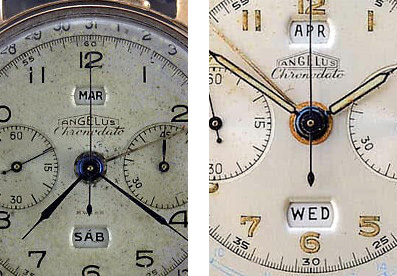
As a general rule, or at least in the copies that appear in the catalog, they usually bear the “Swiss” mark just above the bottom dataria window, although there are other specimens that carry it on the lower edge of the dial, between the scale of seconds and the scale of the days of the month. Some copies we find the legend “Antimagnetic”
The chrono counter, must carry 4 red marks, which are commonly called “telephone counter” In the 40s and after, international calls were counted every three minutes, the cost was doubled to the next three minutes counted, that is, you paid for three minutes, but when these passed, you already paid for 6 minutes and so on (18).
(18) https://forums.watchuseek.com/f11/3-min-indicators-vintage-chronos-751451.html
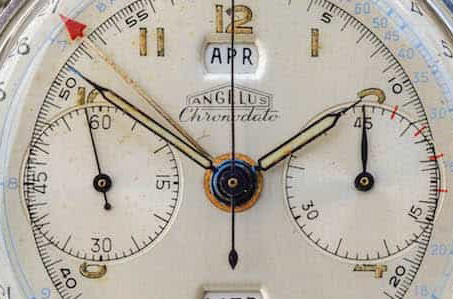
In this image we can also see that the needles of the sub-dial of the seconds and the chrono counter have to be differentiated and it is always the case.
Another point to keep in mind are the back covers:
As a general rule, the rear covers of the steel or gold-plated models have the inscribed logo and the serial number on the back
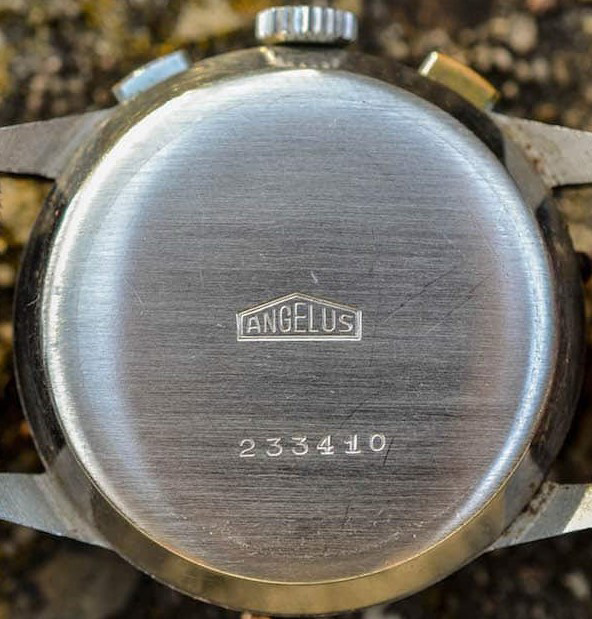
Inside we find the name of the company and the model number
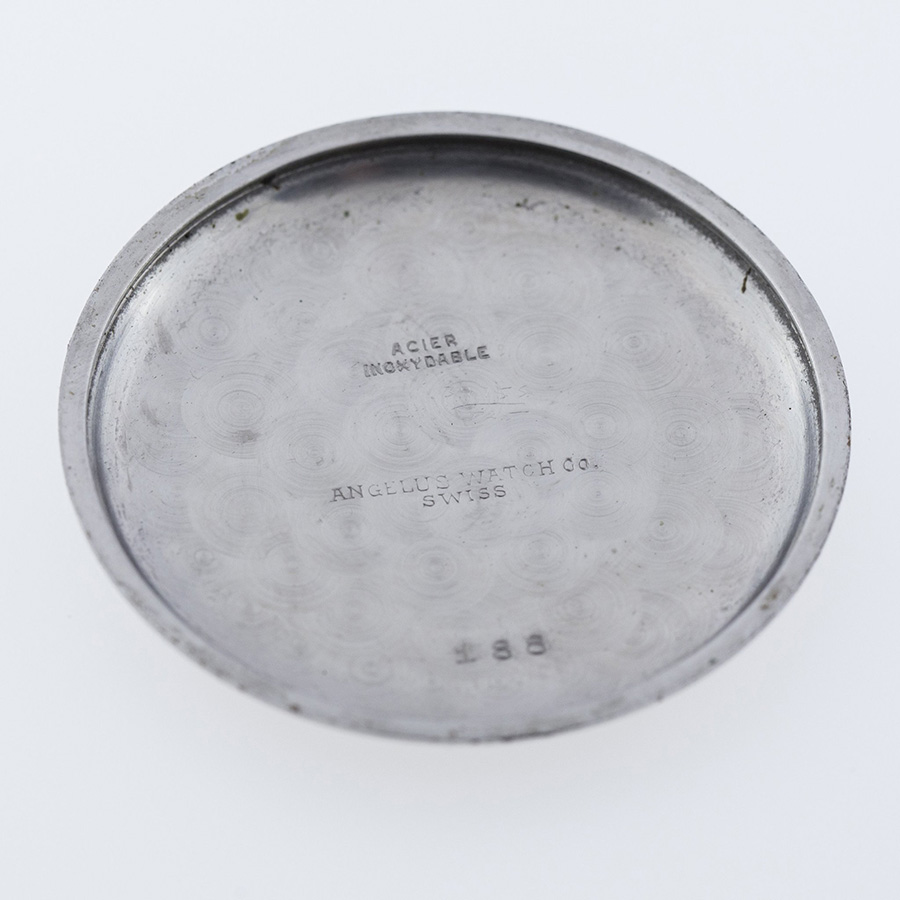
In gold cases, the thing is not so simple, as we can find, tapas of three types:
The national gold cases, which were manufactured in the importing country, to avoid tariff costs
The cases that left the factory (catalog) as steel, as well illustrates this image
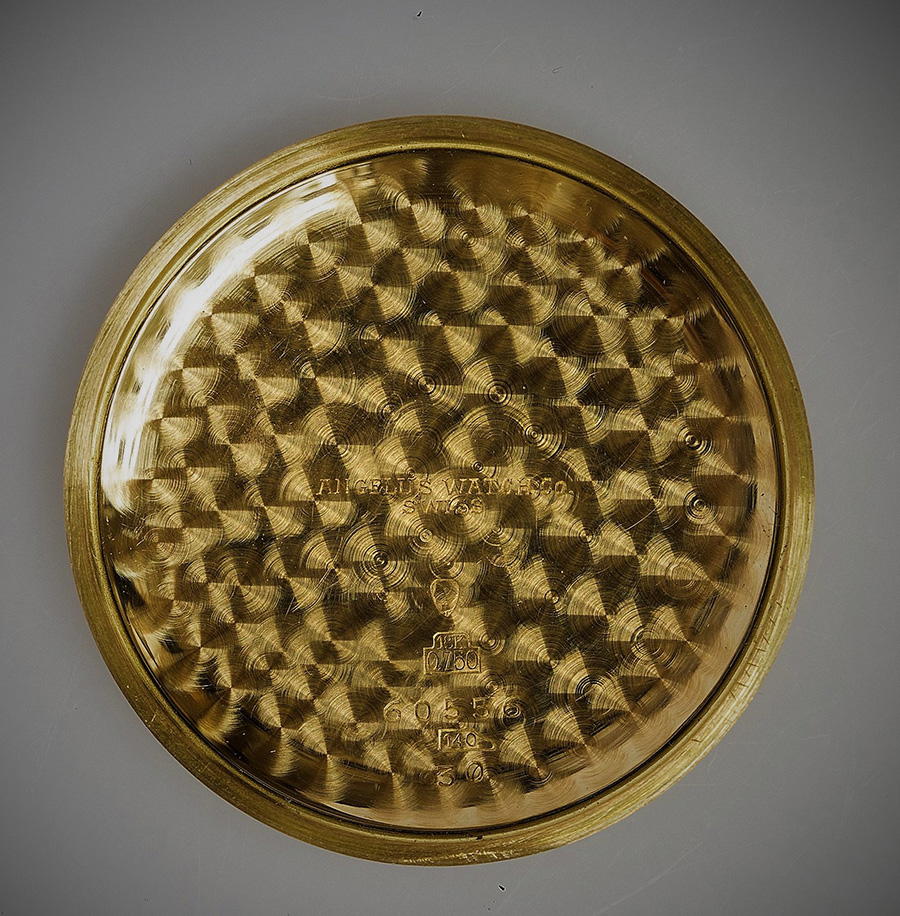
And the cases made for the company at some time that the name of the company was not yet recorded, but if manufactured in Switzerland and with their respective identification stamps (19), like the one that corresponds to my copy:
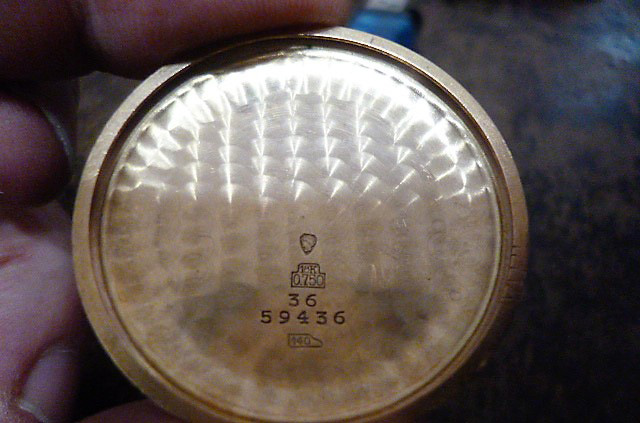
Regarding the typology of the boxes and their types of handles, all the known classifications have been made based on the aforementioned Mexican catalog and we do not have, unfortunately, more information (maybe someone in the future, decides to sample them and classify them (20))
Another point to consider is the caliber; Angelus called it SF 217 and is practically the same as SF 215, as we saw earlier, with the exception of the inclusion of the datario module that makes it unique. Fortunately if there is enough graphic material to be able to compare it. The bridge of the chronographic module must always be signed, with the characteristic logo of the house … In the following image we also observe that the bridges are decorated with Cotés de Géneve, although it is not in all cases and I have not been able to determine the why (I imagine that it will be based on the units taken early or late, and it would not be bad, to do another sampling)
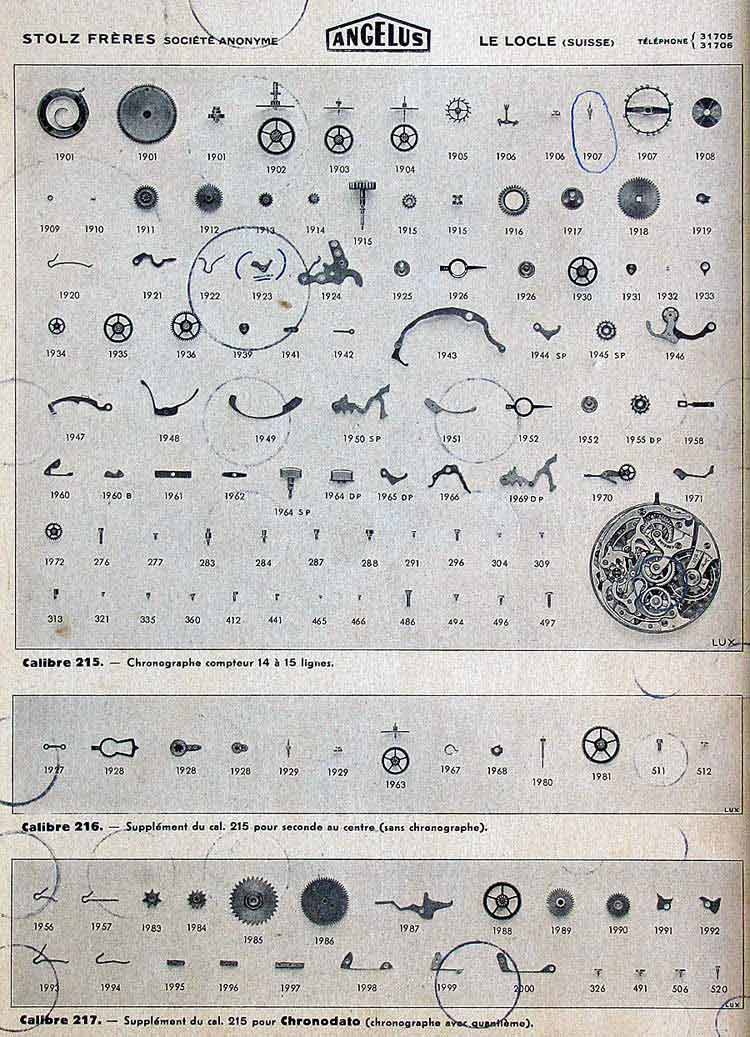
(19) http://users.tpg.com.au/mondodec//Full_list_%20Swiss_Gold_responsibility_marks.pdf
(20) This work has already been partially done, but only based on the known catalog models http://www.invenitetfecit.com/fabricants/page-Angelus4.html
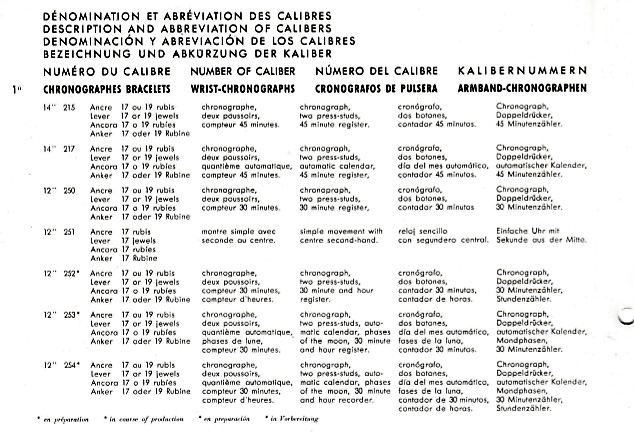
Here the wonderful caliber SF 217
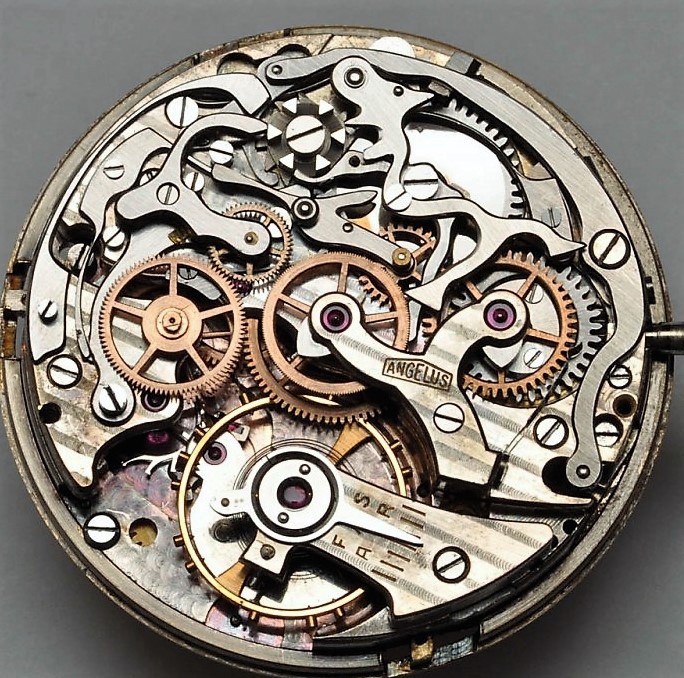
In the recent “Angelus collectors Guide” of Mr. Christoph Öhm Kühlne an attempt is made to make a dataria classification through the shape of the axis of the steering wheel. It may be another interesting starting point, although not necessarily empirical, since there are many factors that can easily dismantle this dating (21).
(21) https://www.fratellowatches.com/wp-content/uploads/2016/10/angelus-collectors-guide-2016.pdf For example that a watch has received a repair or change of a piece or that it left the factory with a different flywheel bridge for that model, which is common among families of calibers where compatible parts could be exchanged during its series manufacturing process. With this I do not want to detract from the invaluable study of Mr. Christoph
As always, the best thing we can do before buying a piece of this historical caliber and by extension, any vintage watch, is to have a little common sense. Try to find a piece that has a good aesthetic and functional balance, read a lot about it and investigate before taking the step and of course, let yourself be advised by professionals like Sigfrid and Silvia, from watches83.com
To finish it I will make available to readers a series of links that have been very useful when making this article and that really are very useful for those who want to acquire a Chronodato.
https://www.timepiecechronicle.com/features/2017/6/6/lost-to-time-angelus
http://www.angelus-watches.com/en-us/history/#
http://www.invenitetfecit.com/
https://www.relojes-especiales.com/foros/vintages/angelus-su-historia-y-evolucion-204690/
https://www.relojes-especiales.com/foros/vintages/cronografos-con-calendario-y-fase-lunar-359725/
https://www.fratellowatches.com/tbt-angelus-chronodato-31727-2/
https://www.fratellowatches.com/tbt-angelus-caliber-215-chronograph-l-e/
https://es.scribd.com/document/368693987/Angelus-Collectors-Guide
https://www.fratellowatches.com/wp-content/uploads/2016/10/angelus-collectors-guide-2016.pdf
As I said above, it has been impossible for me to find the source from where I got a complete pdf catalog of Angelus, dated 1945. Someone who wants to consult it and get a copy, just write to me at miquel99@gmail.com
I would not like to finish without making a small note on the decline of the Maison Stolz Freres. At the end of the 50s the wrist chronographs fell into disuse. Angelus stopped making manufactures and using ebauches. The automatic watch was in vogue at that time and the Maison did not know how to keep up with the times, as it did during its first financial crisis in the 20s caused by the banalization of the repeaters of minutes for the use of radio. The appearance of quartz in watchmaking gave the final blow to many manufactures and caused the disappearance of Angelus like so many other watch brands. However, it was reborn in 2011 and in 2016 it was acquired by La Joux-Perret, which under the direction of Frédéric wenger and Sébastien Chaulmontet (22), created a new line of fine watchmaking.
(22) https://www.lajouxperret.c om/la-manufacture
http://www.angelus-watches.com/en-us/urban-collection/u50-divertourbillon/
I’m going to make a little nod to our anonymous hero with whom we started this way, with an image of the model that supposedly enjoyed with so much pride.
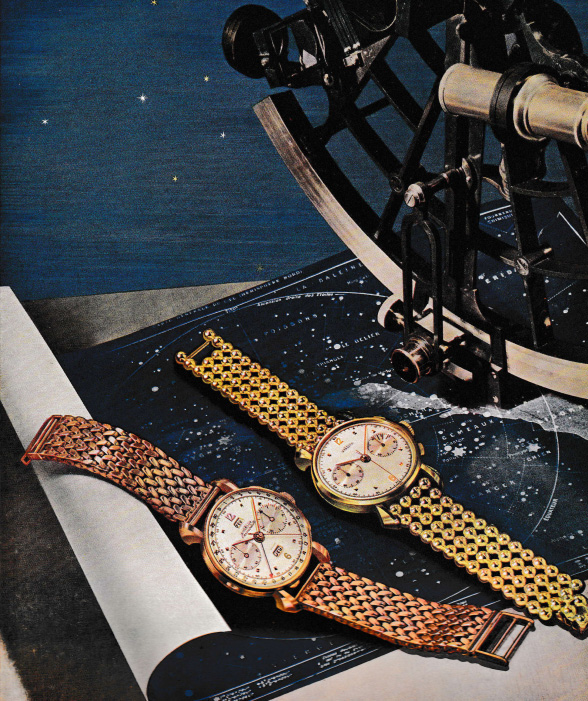
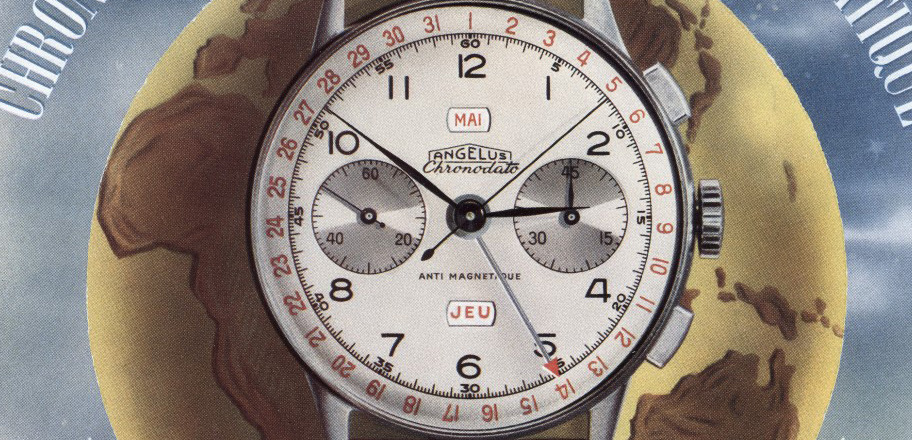
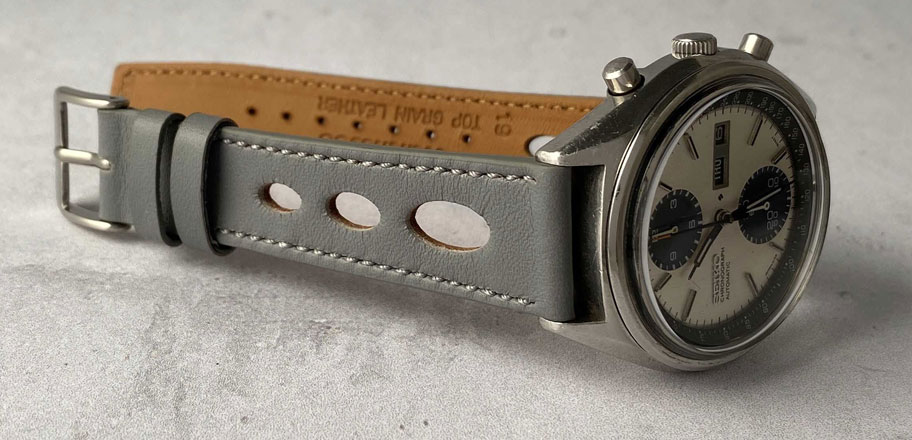
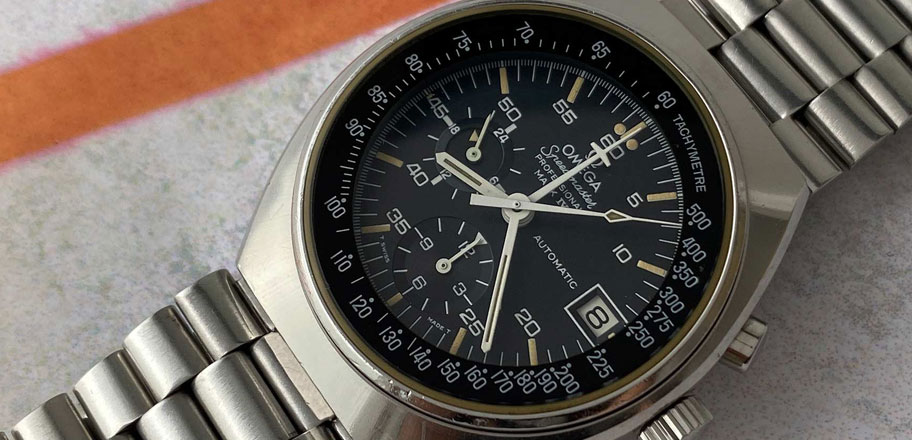
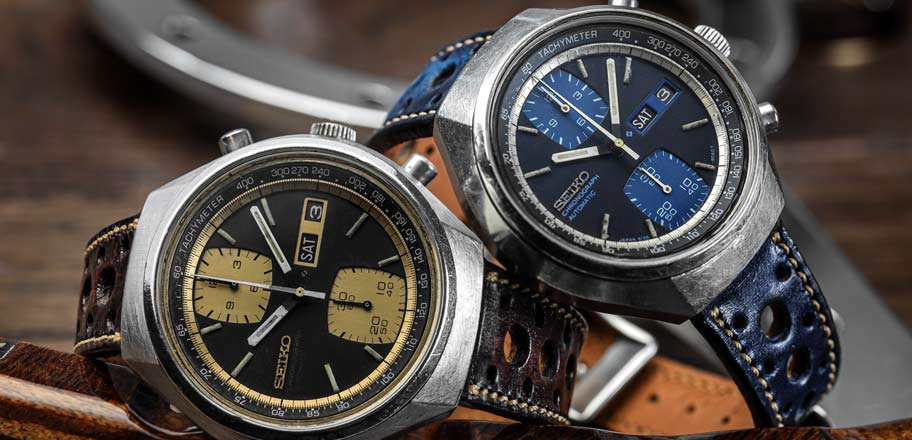
2 Comments
Thanks for the terrific guide
Greetings from Colorado! I’m bored to tears at work so I decided
to check out your site on my iphone during lunch break.
I enjoy the information you present here and can’t wait to take a look when I get home.
I’m amazed at how fast your blog loaded on my cell
phone .. I’m not even using WIFI, just 3G .. Anyways, wonderful blog!